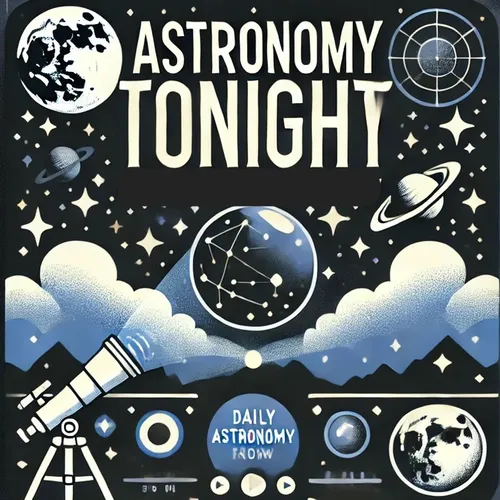Moon Buggy Madness: Apollo 15's Lunar Joyride
- Author
- Inception Point Ai
- Published
- Sat 26 Jul 2025
- Episode Link
- https://www.spreaker.com/episode/moon-buggy-madness-apollo-15-s-lunar-joyride--67127602
This is your Astronomy Tonight podcast.
On July 26th, 1971, the Apollo 15 mission blasted off from Kennedy Space Center, marking the beginning of one of the most ambitious lunar expeditions in human history. This mission was a game-changer, folks! It introduced the lunar roving vehicle, affectionately known as the "Moon Buggy," which allowed astronauts David Scott and James Irwin to become the first humans to drive on another celestial body.
Picture this: Two brave explorers, bouncing along the lunar surface in a $38 million electric car with no roof, no doors, and definitely no cup holders. Talk about the ultimate off-road experience! The Moon Buggy allowed our intrepid astronauts to cover much more ground than previous missions, traveling a total of 17.25 miles across the lunar landscape.
But wait, there's more! Apollo 15 was also the first mission to focus heavily on science, with Scott and Irwin collecting a whopping 170 pounds of lunar samples, including the famous "Genesis Rock." This 4.1 billion-year-old anorthosite sample provided crucial insights into the Moon's early formation.
Meanwhile, up in the command module, pilot Alfred Worden was busy conducting his own groundbreaking experiments in lunar orbit. He even performed the first deep space EVA, venturing out of the spacecraft to retrieve film cassettes from the scientific instruments bay.
So, the next time you're stuck in traffic, just remember: 54 years ago today, humans were joy-riding on the Moon, making tire tracks that will last for millions of years. Now that's what I call leaving your mark!
Don't forget to subscribe to the Astronomy Tonight podcast for more celestial tidbits and cosmic musings. If you're hungry for more fascinating content, check out QuietPlease.AI. Thanks for listening to another Quiet Please Production!
This content was created in partnership and with the help of Artificial Intelligence AI
